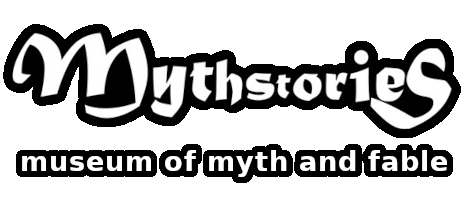
the story
You see that arrow atop the Chantry Chapel. Some would tell you it is just there to mark the Fletchers’ Chancel, but I know different.
It was some years back when Robin Hood was in these parts, but here he was.
Some say Robin had a score to settle with the clergy here. Others say it was a challenge that made him do it, but do it he did.
He climbed to the topmost bough of that great tree on the mound out Bromfield way and he shot an arrow. He said he could hit the weathercock up on the steeple. I don’t know that I could even see it from there.
Anyway, Robin’s aim wasn’t true that day. It could have been he was a bit off colour, or that the wind blew a sudden gust, but that arrow fell short.
He said he’d not miss a second time, but when he went to fetch his arrow it had stuck fast. He couldn’t shift the thing.
After that day Robin Hood never came back to Ludlow again. Because there, bold as you like, on that church roof, is his reminder that not every time did his arrow hit its mark.
en français
La flèche de Robin des Bois
On peut voir cette flèche au sommet de la chapelle mortuaire. Certains vous diraient qu’elle est juste là pour indiquer le Fletchers’ Chancel, mais je connais une autre raison.
Cela faisait des années que Robin des Bois était dans cette contrée, mais il se trouvait bien là.
Certains disent que Robin avait des comptes à régler avec le clergé d’ici. D’autres disent que c’était un pari qui l’avait poussé à le faire, mais il le fit bel et bien.
Il grimpa sur la plus haute branche de ce grand arbre sur le tertre, sur le chemin de Bromfield et il tira une flèche. Il dit qu’il pouvait toucher la girouette au sommet du clocher. Je ne suis pas sûr de pouvoir la voir depuis là.
Quoi qu’il en soit, Robin manqua son but ce jour-là. Peut-être n’était-il pas dans son assiette ou peut-être y eut-il un soudain coup de vent, mais cette flèche–là rata sa cible.
Il dit qu’il ne manquerait pas une seconde fois, mais lorsqu’il alla chercher sa flèche, elle était coincée. Il ne put la sortir.
Après ce jour, Robin des Bois ne revint jamais à Ludlow. Parce que là, aussi insolente que possible, sur le toit de cette église, la flèche rappelle qu’il n’a pas toujours atteint son but.
Translation: Euro Langues Assistance & Tradufrance

Background facts
Ludlow
Ludlow is one of a number of what you could call Norman ‘New Towns’. When the Normans invaded Britain in 1066 they didn’t manage to conquer Wales and it was important for William the Conqueror to set up defensive castles along the borderlands between England and Wales to police the area. Walter De Lacy was put in charge of the task and his son Roger built the castle at Ludlow and the town soon grew around it for protection and trade.

Much of the medieval town layout remains and it is still possible to pick out the site of the long burgage plots. Ludlow was effectively the capital of the Marches (the lands the army had to police by marching up and down) and the ruins of its castle and other intact surviving buildings show off a town steeped in history.
St Laurence’s Church
The sandstone church of St. Laurence was built in the 15th Century. On the roof of the Fletchers Chancel (the meeting place of the arrow makers of Ludlow) is a great Iron Arrow to denote the Fletchers’ trade. It really has nothing to do with Robin Hood as in our story.
The church has a rather unusual hexagonal porch, the upper storey of which was once used as a school. St. Laurence’s also has very fine medieval stained glass and choir stalls.
An Honorary Son
The poet and academic A E Housman wrote about Ludlow affectionately in many of his works, most notably his most popular piece – A Shropshire Lad. Housman was in fact born in Bromsgrove in Worcestershire in 1859 and spent much of his life in London and Cambridge. However, when he died in 1936 his ashes were scattered close to the North wall of St. Laurence’s Church in Ludlow, a place that had never been far from his heart. A plaque low down in a recess bears his epitaph.
Robin Hood’s Butt
Just by Ludlow Racecourse there is a group of about 20 Bronze Age burial mounds, most are no longer visible. The longest of these mounds is called Robin Hood’s Butt. It still bears the tree which Robin was fabled to have climbed to lose his arrow. The butt contained a Bronze Age burial of a 12 – 14 year old boy with a bronze knife. His identify is unknown, but plainly the Bromfield cemetery is a very important one with so many mounds and this mound seems to assume prominence.
The Real Robin Hood – Another Shropshire Lad
When Fulk Fitz Warine III was a young man he was brought up in the Court of Henry II with the King’s sons, Richard, Arthur and John. Fulk was of an age with John but one could never have called them close friends, they were always arguing. One day after Fulk caught John cheating at chess, John threw the board and players at Fulk who retaliated by kicking John across the room and into the wall, not a way to treat a Prince! John rushed to his father, telling him he must punish Fulk. Wise King Henry II would have none of this. He told John that Fulk had surely been provoked and punished John for coming telling tales. From this point the die was cast.
Fulk inherited Whittington Castle in 1197. When John came to the throne in 1199 he ousted Fulk from his baronial seat and set Sir Morys of Hawkstone in his place. Fulk became an outlaw and roamed the country robbing the rich to give to the poor with one aim in his mind, to get his rightful castle back.
In one notable episode Fulk and his band of outlaws managed to capture King John while he was out hunting in Windsor Forest. John promised to give Fulk Whittington Castle back if he let him go. However, after his release, John reneged on his promise and Fulk became all the more determined. Fulk became a great favourite of the people and amassed a great band of followers. Eventually he led his band back to his Castle and laid it to siege and captured it back from Sir Morys. Fulk was so popular that John could do nothing but pardon him. Fulk remained a thorn in John’s flesh and was one of the nobles in the baronial revolt that led to John signing the Magna Carta.
Does the story seem familiar? – Yes, indeed. Substitute the name ‘Robin Hood’ for Fulk and that of the ‘Sheriff of Nottingham’ for Sir Morys and you have it. Robin Hood was indeed a Shropshire Lad.
In 2003 we commissioned Michael Rosen to revisit the ancient legend and compose his own updated verse epic of the story, you can read his poem here:- The Ballad of Fouke le fitz waryn.
Robin Hood in Shropshire
There are many stories of Robin Hood associated with places throughout England. It’s impossible to tell whether Robin Hood was a real outlaw or just a myth. There may even have been many men who assumed the identity in many locations. However, there seems to be something of a tradition in Shropshire of naming Bronze age burial mounds Robin Hood’s Butt (a butt being a mound of earth, used behind a target in archery to catch stray arrows, with Robin’s prowess with bow and arrow you wouldn’t think a butt was necessary). Atop the Long Mynd near the line of the ancient trackway, the Portway, stand two fine burial mounds that bear the same name, Robin Hood’s Butt.
en français
Ludlow
Ludlow est l’une parmi tant d’autres de ce qu’on pourrait appeler les ‘Nouvelles Villes’ Normandes. Lorsque les Normands envahirent la Grande-Bretagne en 1066, ils ne réussirent pas à conquérir le Pays de Galles et il était important pour Guillaume le Conquérant d’ériger des châteaux défensifs le long des pays frontaliers entre l’Angleterre et le Pays de Galles, pour sécuriser la zone.

Walter De Lacy fut chargé de cette mission et son fils, Roger construisit le château à Ludlow si bien que la ville s’agrandit rapidement autour, en quête de protection et de commerce. Une grande partie du plan de la ville médiévale subsiste et il est encore possible de discerner l’emplacement des cours et des jardins. Ludlow était effectivement la capitale des Marches (les terres que l’armée devait sécuriser en marchant de long en large) et les ruines de son château et d’autres bâtiments toujours intacts témoignent que la ville est entrée dans l’Histoire.
L’Église St Laurence
(le lieu de rassemblement des fabricants de flèches de Ludlow) il y a une grande flèche en fer qui témoigne du commerce des flèches. Elle n’a vraiment rien à voir avec Robin des Bois, comme dans notre histoire.
L’église est dotée d’un porche hexagonal plutôt singulier, dont l’étage supérieur était jadis utilisé comme école. St. Laurence possède également de très jolis vitraux médiévaux et une très belle stalle.
Un Fils d’honneur
Le poète et universitaire A. E. Housman parle de Ludlow affectueusement dans beaucoup de ses écrits et plus particulièrement dans son oeuvre la plus populaire – A Shropshire Lad (un Garçon du Shropshire). Housman naquit en fait à Bromsgrove dans le Worcestershire en 1859 et passa la majeure partie de sa vie à Londres et à Cambridge. Cependant, lorsqu’il mourut en 1936, ses cendres furent éparpillées près du mur nord de l’église St. Laurence à Ludlow, un endroit qui n’avait jamais été loin de son cœur. Une plaque commémorative dans un renfoncement porte son épitaphe. On peut trouver un des poèmes de ‘A Shropshire Lad’, appelé ‘On Wenlock Edge’ sur les pages de ‘Perdue dans les flots’.
Le Tertre de Robin Des Bois
Tout près du champ de courses de Ludlow, il y a un groupe d’environ 20 tumulus de l’Age de Bronze, la plupart ayant disparu. Le plus long d’entre ces tumulus s’appelle Robin Hood’s Butt (le Tertre de Robin Des Bois). L’arbre que, selon la légende, Robin avait escaladé pour perdre sa flèche s’y trouve toujours. Le tertre comportait une sépulture de l’Age de Bronze d’un garçon âgé entre 12 et 14 ans avec un couteau de bronze. Son identité est inconnue, mais de toute évidence, le cimetière de Bromfield est très important et comporte de très nombreux tumulus et ce tertre arbore une certaine proéminence.
Le Vrai Robin Des Bois – Un autre Garçon du Shropshire
Lorsque Fulk Fitz Warine III était jeune homme, il fut élevé à la cour de Henri II avec les fils du roi, Richard, Arthur et John. Fulk était du même âge que John mais nul n’aurait pu dire qu’ils étaient proches, ils n’avaient de cesse de se disputer. Un jour, Fulk surprit John à tricher aux échecs, alors John lui jeta à la figure l’échiquier et les pièces. Fulk riposta en assaillant John de coups de pieds à travers toute la pièce et dans le mur, ce qui n’était pas une façon de traiter un prince! John se précipita auprès de son père pour lui dire qu’il devait punir Fulk. Le Roi Henri II était sage et refusa. Il dit à John que Fulk avait certainement été provoqué et il punit John pour être venu raconter des mensonges. A partir de cet instant-là, le sort en était jeté.
Fulk hérita du Château de Whittington en 1197. Lorsque John monta sur le trône, en 1199, il évinça Fulk de son siège seigneurial et y installa Sir Morys of Hawkstone à sa place. Fulk devint hors-la-loi et sillonna le pays en volant les riches pour donner aux pauvres avec un but à l’esprit, récupérer son légitime château.
Lors d’un remarquable épisode, Fulk et sa bande de hors-la-loi parvinrent à capturer le Roi John alors qu’il chassait dans la Forêt de Windsor. John promit de rendre à Fulk son Château de Whittington s’il le laissait partir. Cependant, après sa libération, John manqua à sa promesse, ce qui augmenta d’autant la détermination de Fulk. Fulk devint un héros auprès des gens et un grand nombre le soutint. Il finit par retourner à son château avec sa bande, l’assiégea et le reprit à Sir Morys. Fulk était tellement populaire que John ne put rien faire d’autre que lui pardonner. Fulk demeura une épine dans le pied de John et compta parmi les nobles, lors de la révolte seigneuriale, qui obligea John à ratifier la Grande Charte.
L’histoire vous semble-t-elle familière ? – Oui, en effet. Remplacez le nom de ‘Robin des Bois’ par Fulk et celui du ‘Shérif de Nottingham’ par Sir Morys et vous y êtes. Robin des Bois était en fait un garçon du Shropshire.
Robin Des Bois dans le Shropshire
Il existe de nombreuses histoires associant Robin des Bois avec des lieux dans toute l’Angleterre. Il est impossible de dire si Robin des Bois était un vrai hors-la-loi ou juste un mythe. Il est même possible que son nom ait été endossé par de nombreux hommes en de nombreux endroits. Cependant, il semble appartenir à une certaine tradition du Shropshire d’appeler les tumulus de l’Age de Bronze Tertre de Robin des Bois (un tertre étant un monticule de terre, utilisé derrière une cible, dans le tir à l’arc, pour récupérer les flèches perdues – compte tenu de l’habileté de Robin avec un arc et des flèches, on n’aurait pas pensé qu’un tertre était nécessaire). Au sommet du Long Mynd, près de la ligne de l’ancienne voie ferrée, le Portway, se dressent deux jolis tumulus portant tous les deux le même nom, le Tertre de Robin des Bois.
Translation: Euro Langues Assistance & Tradufrance

Key Stage 2 Activities
He Stole From the Rich to Give to the Poor
Robin Hood was a very popular hero. There are stories about him in more places than he could ever have visited. Make up a story about Robin’s heroic deed when he visited your town.
A Saxon?
Robin of Loxley, who many stories identify as Robin Hood, was a Saxon Lord before Normans came and took his land. But who were the Saxons and where did they come from originally? Search and see what you can find out about the Saxons.
A Different Perspective
Robin didn’t like being reminded of his bad marksmanship. He would appreciate a different story to tell his friends about his visit to Ludlow. Can you help him?
Where Did You Get That Hat
Follow these instructions to make a Robin Hood Hat and a plume to decorate it.
Step A: Measure around your head. Halve the measurement and add 2cm. This number will be the length a-b on the patterns.

Step B: Draw out your pattern on card and cut it out.
Step C: Lay the pattern on green felt of another stiff fabric. Cut out two pieces of material.
Step D: Stitch or glue the two pieces together along the edges marked with a dotted line on the pattern above.
Step E: Turn the material inside out and turn up a brim at the line a-b above. Decorate with a feather or make a plume (see below)
Step 1: Take a drinking straw and a roll of tissue or crepe paper about 6cm wide. Cut 3cm slits every 1cm along the roll of paper.
Step 2: Use tape, double sided tape or glue to stick the roll to the straw. Start at the top and carefully spiral down the straw.
Step 3: Leave about 5cm of the straw showing at the bottom and cut off any excess paper. Run your hand gently down your plume to fluff out the ‘feathers’.

Now all you need to do is fix your plume to your new hat.
Camouflage
Robin and his men wore clothes of Lincoln green so they couldn’t be seen in the forest. Draw him a uniform for life in:- (1) The Sahara Desert or (2) The Himalayas.
Robin Hood And The Tanner
There’s a good many songs about Robin Hood. This one is about Robin’s encounter with a tanner, but the lyric doesn’t tell you what a tanner did to earn his living, see if you can find out?
See lyric…
Robin Hood And The Tanner
The Tanner went forth one summer morning
To view the merry green wood
For to hunt for the deer that run here and there,
And there he espied Robin Hood.
Aye! And there he espied Robin Hood.
“What fellow art thou?” Quoth bold Robin Hood
“And what is thy business here?
For now, to be brief, thou dost look like a thief
And come for to steal the king’s deer.
Aye! And come for to steal the king’s deer.”
“Now, I am the keeper of this parish,
The king, he hath put me in trust;
And therefore I pray thee to get on thy way,
Or else to upstand thee I must.
Aye! Or else to upstand thee I must.”
“Tis thou must have more partakers in store
Before thou upstand me in deed;
For I have a staff, he is made of ground graffe,
And I warrant he’ll do my deed.
Aye! And I warrant he’ll do my deed.”
“And I have another,” quoth bold Robin Hood,
“It’s made of an oaken tree;
He’s eight foot and a half and would knock down a calf,
And why shouldn’t it knock down thee?
Aye! And why shouldn’t it knock down thee?”
“Let us measure our staves,” says bold Robin Hood,
“Before we begin and away;
If by half a foot mine should be longer than thine,
Then that should be counted foul play.
Aye! Then that should be counted foul play.”
Then at it they went, for bang and for bang,
The space of two hours or more;
Ev’ry blow they did swing made the grove for to ring
And they played at their game so sure,
Aye! And they played at their game so sure.
Thanks to our page sponsors…





